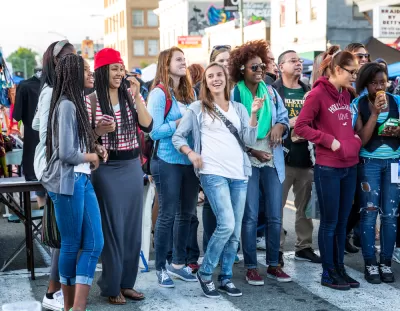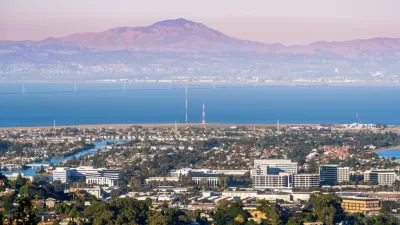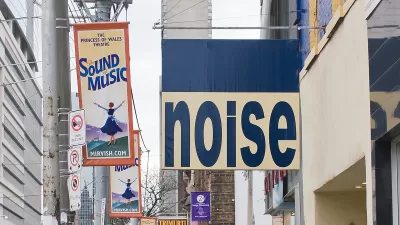While narratives about gentrification and segregation dominate the headlines, one study found evidence of increased integration around the United States.

"In all parts of the United States, the number of neighborhoods that sustain a mix of black, white, Asian and Hispanic residents over time is growing quickly," reports Gillian Kiley.
Kiley is sharing the findings of a new study published in Demography and written by researchers at Brown University and the University of Wisconsin-Whitewater. "Global Neighborhoods: Beyond the Multiethnic Metropolis," as the study is titled, "assessed 342 metropolitan regions with populations of at least 50,000 over the period from 1980 to 2010 to determine whether integrated neighborhoods existed outside of the nation's most diverse metropolitan centers."
The authors chose the term "global neighborhoods" to describe places where whites and blacks live alongside Hispanics, Asians, or both. According to the study, global neighborhoods "are showing up in large numbers in each type of metropolitan center, throughout the country, in urban areas with different histories and combinations of populations."
While the study might seem at first glance to report unequivocally good news, there are also a few reasons to pause. "While the number of global neighborhoods is on the rise, the study also found increasing numbers of all-minority neighborhoods caused by white residents moving out of previously mixed areas—close to a 50 percent increase over the 30-year period," adds Giley.
FULL STORY: Integrated neighborhoods more common across the US, study finds

Planetizen Federal Action Tracker
A weekly monitor of how Trump’s orders and actions are impacting planners and planning in America.

San Francisco's School District Spent $105M To Build Affordable Housing for Teachers — And That's Just the Beginning
SFUSD joins a growing list of school districts using their land holdings to address housing affordability challenges faced by their own employees.

The Tiny, Adorable $7,000 Car Turning Japan Onto EVs
The single seat Mibot charges from a regular plug as quickly as an iPad, and is about half the price of an average EV.

Seattle's Plan for Adopting Driverless Cars
Equity, safety, accessibility and affordability are front of mind as the city prepares for robotaxis and other autonomous vehicles.

As Trump Phases Out FEMA, Is It Time to Flee the Floodplains?
With less federal funding available for disaster relief efforts, the need to relocate at-risk communities is more urgent than ever.

With Protected Lanes, 460% More People Commute by Bike
For those needing more ammo, more data proving what we already knew is here.
Urban Design for Planners 1: Software Tools
This six-course series explores essential urban design concepts using open source software and equips planners with the tools they need to participate fully in the urban design process.
Planning for Universal Design
Learn the tools for implementing Universal Design in planning regulations.
Smith Gee Studio
City of Charlotte
City of Camden Redevelopment Agency
City of Astoria
Transportation Research & Education Center (TREC) at Portland State University
US High Speed Rail Association
City of Camden Redevelopment Agency
Municipality of Princeton (NJ)





























